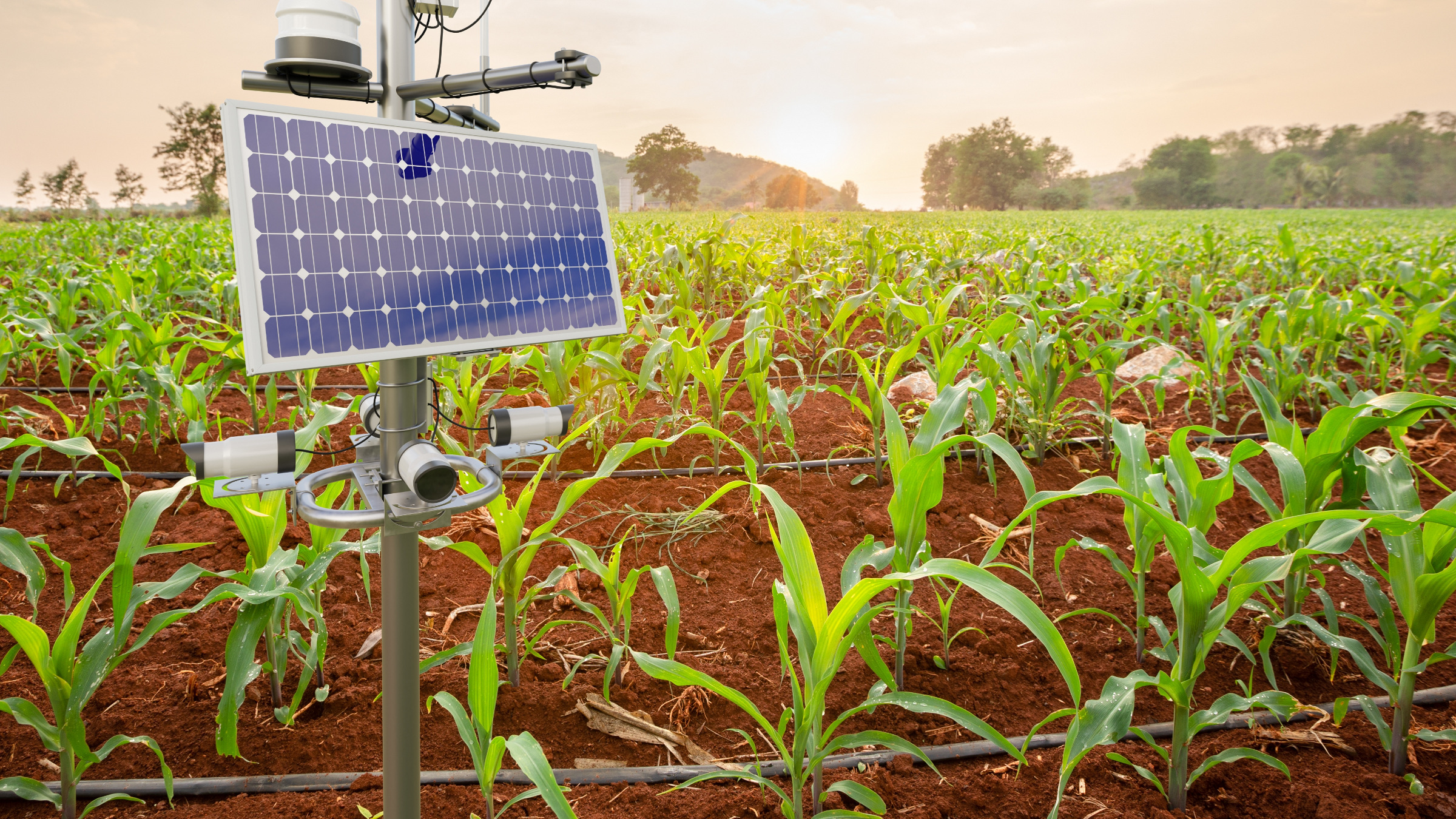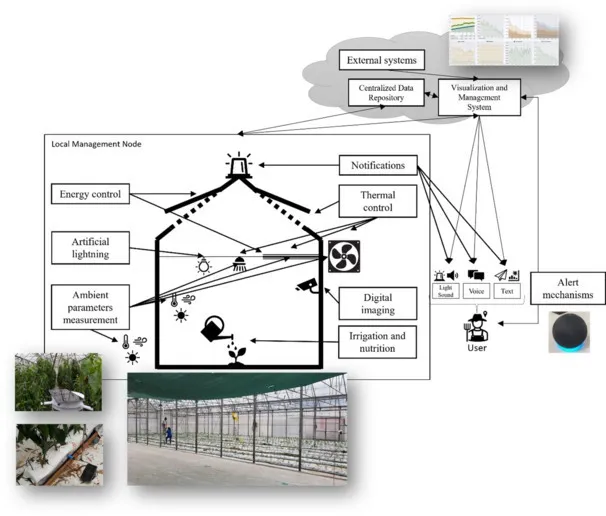Smart farming technologies have the potential to revolutionize agriculture by enhancing resource efficiency, productivity, and sustainability. However, small-scale farmers in Latin America face challenges in adopting these technologies due to limited resources and technological constraints. In response, we have developed an affordable smart farming solution that empowers small-scale farmers with a comprehensive system that strategically integrates sensors into monitoring stations allowing control over specific actuators. This solution enables precise and resource-efficient production, by using monitoring stations deployed in crop fields, accessible visualization dashboards for farmers to review collected crop data, and a context-sensitive alert module.
In greenhouse environments, monitoring is crucial for optimal crop health and productivity.10 For this reason, we leverage distinct technologies to create monitoring stations facilitating real-time data acquisition through sensors. The collected data is then processed to generate actionable insights, empowering farmers to make informed decisions about resource allocation, irrigation, and climate control.
We introduce a scalable technological architecture tailored to the specific needs of small-scale farmers in Latin America, built upon our smart farming solution. This architecture incorporates advanced and emergent technologies, such as the Internet of Things,8 wireless sensor networks,1 data analytics,7 and artificial intelligence.5 Its aim is to streamline the development of adaptable smart farming platforms suitable for different farm sizes and resource capacities, accommodating both individual and collective installations. Farmers associations and government bodies can deploy it as a public solution to support the productive sector. A meticulous analysis of Latin American agricultural contexts guided the identification of key components, including low-cost IoT sensors, data collection and transmission protocols, centralized data storage and processing, and user-friendly interfaces for farmers.
The proposed architecture results from several multidisciplinary research projects conducted throughout the last four years. The research has been carried out following the design science methodology to design and test an incremental set of artifacts. After creating an integral smart farming platform, which includes monitoring and control stations,6 a flexible network architecture,4 data processing guided by AI,2,9 and smart alerting,3 the research culminates by formally defining the proposed technological architecture following the ISO/IEC/IEEE 42010:2011 standard.
This research offers not only a practical and scalable solution tailored to the unique challenges faced by small-scale farmers in Latin America but helps to disseminate the knowledge acquired during its design and development. By enabling small-scale farmers to embrace smart farming technologies, we aim to foster inclusive agricultural development, narrow the digital divide, and ensure that the benefits of technology are accessible to all. This knowledge provides a solid foundation for policymakers, researchers, and stakeholders to promote the widespread adoption of smart farming solutions and drive the transformation of agriculture in the region.





Join the Discussion (0)
Become a Member or Sign In to Post a Comment